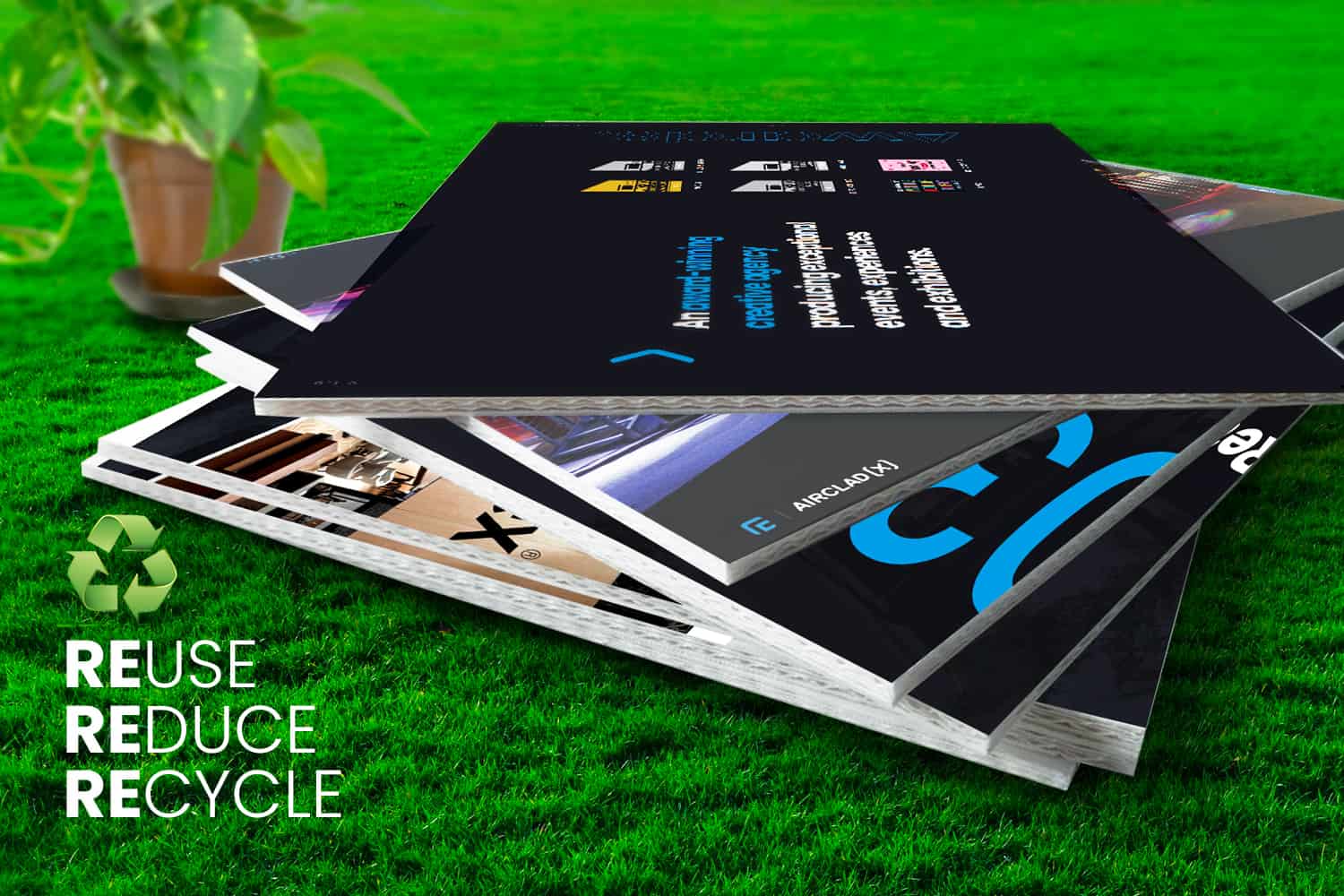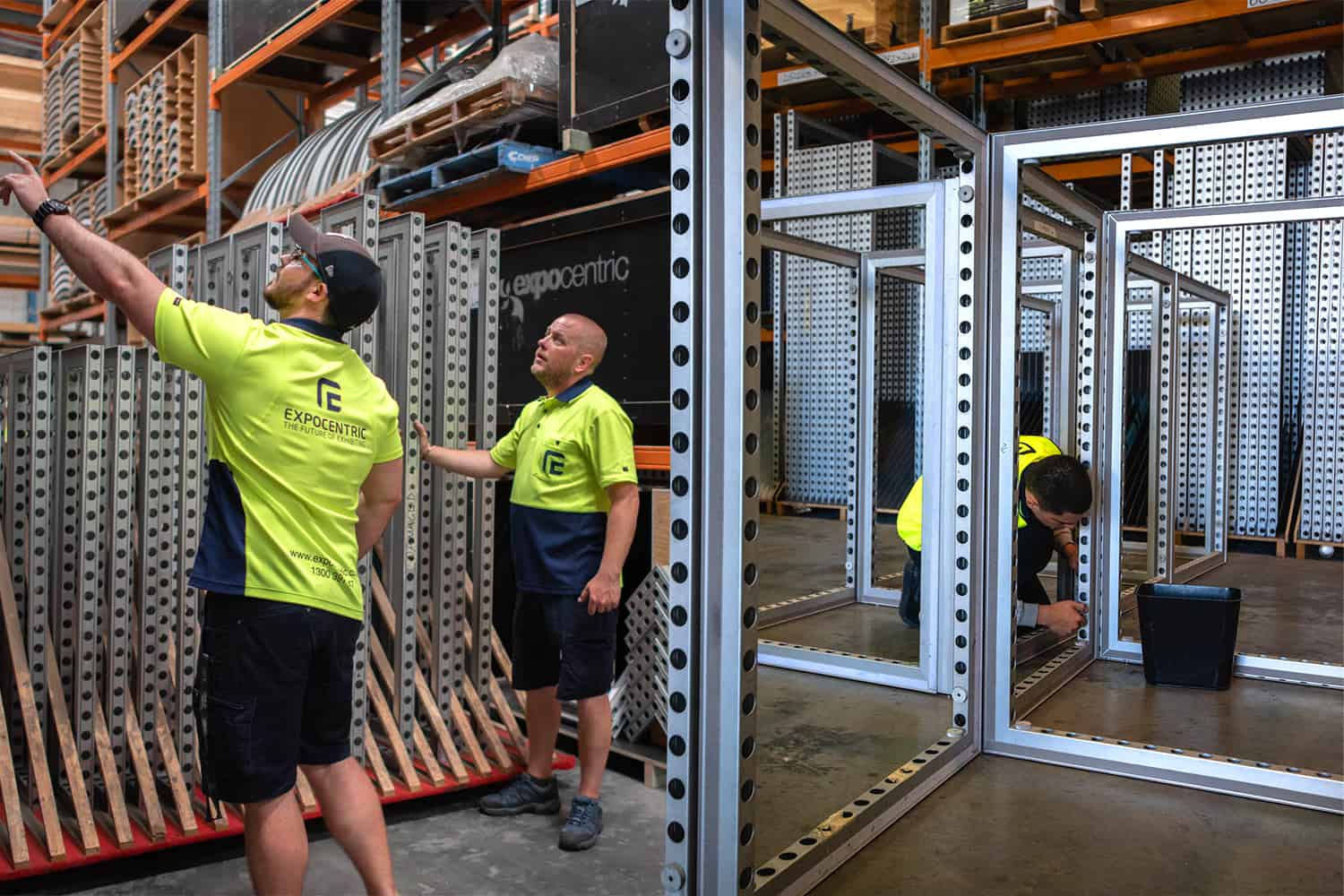Four things you can start implementing now to make your stand more eco friendly.
Don’t think your company has a carbon footprint? You might not be able to see it, but our earth can feel its weight. Reducing your carbon footprint doesn’t need to be an overwhelming mission or cost the earth. Here are our four earth-friendly fixes, your company can have up and running in time for its next exhibition.
Print less, print green.
It’s understandable that at times printing is unavoidable for onsite, but there is no longer only one way to print. Look a little deeper into your printing suppliers and it can make all the difference:
- Be selective; choose a supplier who offers printing solutions that minimise their environmental footprint.
- Traditional printing not only uses a lot of water, but also pollutes local freshwater tables. Select a company who uses a digital waterless printing solution.
- Select companies who are conscious of their supply chains and lead times to eliminate waste. Better yet, select one that does on-demand printing to eliminate over-printing
- Look into the usage of safer products. Look beyond the traditional inks used and seek companies who use water based ink and are in line with stringent certification.
By selecting a suitable printer, you can continue to reduce your carbon footprint, all the while leaving the printing up to the experts.

Swap Out The Swag!
Albeit a tried and tested concept to push your branding, don’t be afraid to get clever. Before throwing your branding on the next pen or keep-cup, look around your office or home. If you’ve already got one, so too will your potential customer. Not only will the next exhibitor be giving it away, but the likelihood of the customer remembering your brand is in the bin (along with your freebie). There are two alternatives to this approach:
- Activations: Swap out sending customers away with a product and draw them in with an incentive. Activations are unique experiences provided on your stand that work to encourage attendees to join you on your stand to participate. Tip: allow attendees to trial products. Alternatively, run a competition which in turn will encourage attendees to engage with your stand. Engagement on your stand is a great way to build leads.
- Make it eco friendly: If you can’t look past a traditional promo item there are now some incredible eco-friendly options. Keep your brand top of mind from a unique perspective without hurting the earth. Stuck for ideas? We’ve seen seed bombs and seed paper, succulants and wooden cutlery sets, simply search sustainable giveaways and the list goes on!

Get Digital
Digital is your answer.
We all know how to use a QR Code (thanks COVID) – so use it to your advantage. Store what used to be on paper now digitally, and direct the foot traffic on your stand back online to learn more about you. Hint: Request contact information upon scanning the QR code to grow your database. Incorporating digital brochures makes lead capture easier, also allowing you to track stand visitors and brochure views.
What about signage? A single TV screen on your stand wall not only looks sleek, but can host live messaging. Digital signage allows you to share more content, moving content and update any last minute messaging. Wipe the deadlines from your calendars as digital content can be worked on until the last minute and spelling mistakes fixed in a second. Moving content continues to attract more attention and hold engagement for longer.

Select Eco Suppliers.
We’ve already spoken about printing suppliers, but don’t let it stop there! Select suppliers that align with your company’s sustainability practices. Here are three points to keep top of mind when deciding:
- Voice your sustainability targets. Get on the same page as your suppliers by having the conversation up front. Ensure they are aware of your sustainability targets and gain understanding on whether theirs are aligned with you.
- Actions speak louder than words. Seek examples of how your suppliers are currently achieving their own sustainability goals. Don’t be afraid to ask for their objectives, metrics and evidence that their policies have been put into place.
- The supply chain. Look at your suppliers’ suppliers – according to McKinsey’s Anne Titia Bove and Steven Swartz, “The typical consumer company’s supply chain creates far greater social and environmental costs than its own operations, accounting for more than 80% of greenhouse-gas emissions and more than 90% of the impact on air, land, water, biodiversity, and geological resources.”
If you’re making an effort to be more conscious then your suppliers should be held accountable too.
Reducing your company’s carbon footprint is a step in the right direction and a step toward a more eco-friendly exhibition stand.

